Recent Posts
Spotting Storm Damage: A Guide to Recognizing Property Damage After a Storm
1/16/2024 (Permalink)
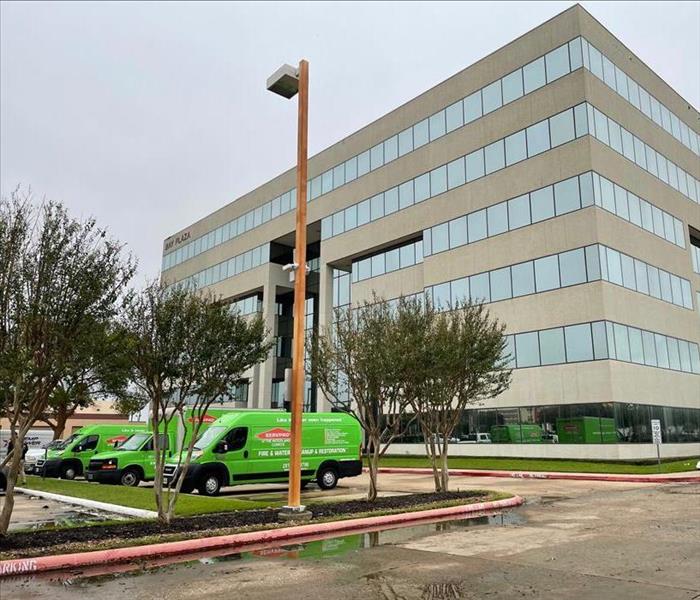 When nature strikes, it often leaves behind a trail of destruction that requires immediate attention.
When nature strikes, it often leaves behind a trail of destruction that requires immediate attention.
When nature strikes, it often leaves behind a trail of destruction that requires immediate attention. Identifying storm damage is crucial to kick-starting the restoration process efficiently. In this blog, we'll walk you through the essential steps to recognize storm damage on your property.
Understanding the Types of Storm Damage
- Roof Damage
Winds, hail, or fallen debris during storms can severely impact your roof. Look for missing shingles, cracks, dents, or water stains in your attic or ceiling.
- Structural Damage
High winds can weaken the structure of your property, causing cracks in walls, foundations, or even structural warping.
- Water Damage
Heavy rains or flooding can lead to water intrusion, causing damage to walls, floors, and belongings. Check for signs of water stains, mold, or musty odors.
- Tree Damage
Fallen trees or branches can cause significant damage to your property. Inspect for broken windows, structural damage, or debris scattered around the area.
Steps to Identify Storm Damage
Safety First: Before assessing damage, prioritize safety. Check for any immediate hazards, such as downed power lines or unstable structures.
Exterior Inspection: Walk around your property to spot any visible signs of damage. Look for dents, cracks, missing materials, or displaced items.
Roof Inspection: Inspect your roof for missing or damaged shingles, dents, or holes. Use binoculars for a closer look if climbing onto the roof isn’t safe.
Interior Assessment: Check ceilings, walls, and floors for water stains, leaks, or any visible signs of damage.
Professional Inspection: For a thorough evaluation, contact a trusted restoration company like SERVPRO of Baytown/Channelview. Our experts have the tools and expertise to assess hidden damages accurately.
Why Immediate Action is Essential
Ignoring storm damage can lead to more significant issues down the line, such as mold growth, structural weakening, or increased repair costs. Taking prompt action not only ensures your safety but also prevents secondary damage.
How SERVPRO® Can Help
At SERVPRO of Baytown/Channelview, we understand the urgency of storm damage restoration. Our trained technicians promptly respond to assess and mitigate damages. Using advanced equipment and proven techniques, we restore your property to its pre-damaged condition efficiently.
Identifying storm damage early is crucial for a swift and effective restoration process. Regular inspections and immediate action can minimize the impact and costs associated with such damages. Remember, your safety is paramount.
Stay safe, stay prepared!
Restoring Your Home: The Step-by-Step Process of Fire Damage Cleanup
12/15/2023 (Permalink)
Fires can be devastating, but with a well-structured approach, your home can be restored to its former glory. In this blog, we'll walk you through the essential steps of fire damage cleanup, helping you understand what to expect during this challenging time.
Step 1: Assessment and Inspection
The first crucial step in the fire damage cleanup process is the initial assessment. Our professionals will evaluate the extent of the damage, noting structural issues, the presence of hazardous materials, and the severity of soot and smoke residue. This assessment guides the development of a customized restoration plan.
Step 2: Safety Measures
Safety is a top priority in any fire damage cleanup. Our team will secure the area, addressing potential safety hazards like weakened structures, electrical problems, and harmful materials. We ensure that your property is safe for both our team and your family.
Step 3: Water Removal
Fires are often extinguished with water or other suppressants, which can lead to secondary damage. We'll remove any standing water, thoroughly dry the affected areas, and prevent mold growth.
Step 4: Soot and Smoke Removal
Soot and smoke residue can be challenging to remove and can cause long-term damage if left untreated. Our team uses specialized equipment and cleaning agents to remove these contaminants from walls, ceilings, and surfaces.
Step 5: Odor Elimination
The lingering smoke odor is a common issue after a fire. We employ advanced deodorization techniques, including ozone treatments and thermal fogging, to completely eliminate these odors and ensure your home smells fresh again.
Step 6: Cleaning and Sanitizing
All salvageable items and structures are meticulously cleaned and sanitized. We use industry-leading cleaning solutions to restore your belongings to their pre-fire condition.
Step 7: Repairs and Restoration
Once the cleaning is complete, the restoration process begins. This involves structural repairs, such as replacing drywall and flooring, painting, and other finishing touches. Our goal is to return your home to its pre-fire condition, "Like it never even happened."
Step 8: Content Restoration
In addition to your home's structure, we also address the restoration of personal belongings and furnishings. Our professionals will assess and restore items as needed, ensuring you retain as much as possible.
Step 9: Final Inspection
After completing the restoration work, a final inspection is conducted to ensure that every aspect of your home has been restored to its pre-fire state.
Step 10: Documentation and Insurance
We provide comprehensive documentation of the restoration process, which is essential for insurance claims. Our team works closely with your insurance company to facilitate a smooth claims process.
Fire damage cleanup is a complex and detailed process that requires expertise and experience. At SERVPRO® of Baytown/Channelview, we understand the importance of a thorough and systematic approach to fire damage restoration. Our goal is to bring your home back to its pre-fire condition, ensuring your peace of mind during this challenging time. If you've experienced a fire and need professional assistance with cleanup and restoration, don't hesitate to contact our local SERVPRO® team today. We're here to help you through every step of the process and restore your home to its former glory!
9 Tips for Cleaning Small Mold Infestations in Your Home
11/10/2023 (Permalink)
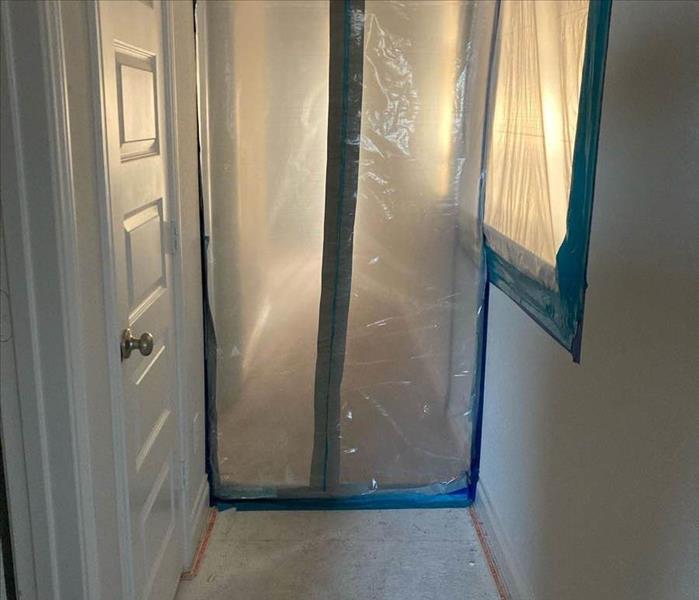 if you encounter extensive mold issues, it's best to consult with professionals like SERVPRO® of Baytown/Channelview for thorough mold remediation.
if you encounter extensive mold issues, it's best to consult with professionals like SERVPRO® of Baytown/Channelview for thorough mold remediation.
Dealing with mold can be a common issue, especially in humid climates like Baytown, TX. Knowing how to handle small mold infestations is essential to maintain a clean and mold-free living environment. In this blog, we'll guide you through the steps to effectively clean up small amounts of mold in your Baytown home. By taking the right measures, you can ensure the safety of your property and your loved ones.
Safety First
Before embarking on any mold cleanup, prioritize your safety. Mold spores can be risky, so it's crucial to wear appropriate personal protective equipment (PPE). Equip yourself with gloves, goggles, and a mask to protect against exposure to mold.
Identify the Mold
Start by identifying the type of mold you're dealing with. While most molds are harmless, some may require special precautions. Common molds found in homes include Cladosporium, Penicillium, and Aspergillus. Identifying the mold type can help determine the best cleaning approach.
Gather Your Supplies
To effectively clean up mold, you'll need several supplies on hand, including:
- Protective gear (gloves, goggles, mask)
- Plastic sheets or tarps to contain the affected area
- A scrub brush, detergent, and water for cleaning
- Hydrogen peroxide or white vinegar for disinfection
- Plastic bags for disposing of contaminated materials
- A HEPA vacuum cleaner to capture mold spores
- Fans and dehumidifiers to aid in drying the area
Contain the Area
To prevent mold spores from spreading to other parts of your home, isolate the mold-infested area. Seal it off with plastic sheets or tarps, ensuring proper ventilation by directing airflow outside. This containment step is crucial in limiting the mold's spread and reach during cleanup.
Clean the Mold
Begin cleaning by gently scrubbing the moldy surface with a scrub brush and a mixture of detergent and water. This step helps remove the mold from non-porous surfaces. Rinse the area thoroughly with clean water and allow it to dry completely. Adequate drying is essential to discourage future mold growth.
Disinfect the Area
To prevent mold from returning, it's vital to disinfect the cleaned area. Hydrogen peroxide or white vinegar can be effective natural solutions for this purpose. These substances can help kill any remaining mold spores, adding an extra layer of protection against mold recurrence.
Vacuum with a HEPA Filter
Use a vacuum cleaner equipped with a HEPA filter to capture any loose mold spores. Carefully vacuum the affected area and its surroundings. This step aids in removing any remaining microscopic mold particles.
Dispose of Contaminated Materials
Place any mold-contaminated materials, such as cleaning cloths, brushes, or plastic sheets, into plastic bags. Seal the bags tightly before disposal to prevent the spread of mold spores.
Prevent Future Mold Growth
To avoid future mold issues, it's crucial to address the source of moisture that led to mold growth. Promptly repair any leaks or water damage. Ensure good ventilation throughout your home and maintain proper humidity levels to create an environment less conducive to mold growth.
Cleaning up small amounts of mold in your Baytown home is manageable with the right precautions and supplies. However, if you encounter extensive mold issues or are uncertain about the type of mold you're dealing with, it's best to consult with professionals like SERVPRO® of Baytown/Channelview for thorough mold remediation. We're here to assist you in maintaining a clean and mold-free living space.
How Baytown's Humidity Increases Risks of Water Damage and Mold Growth
10/18/2023 (Permalink)
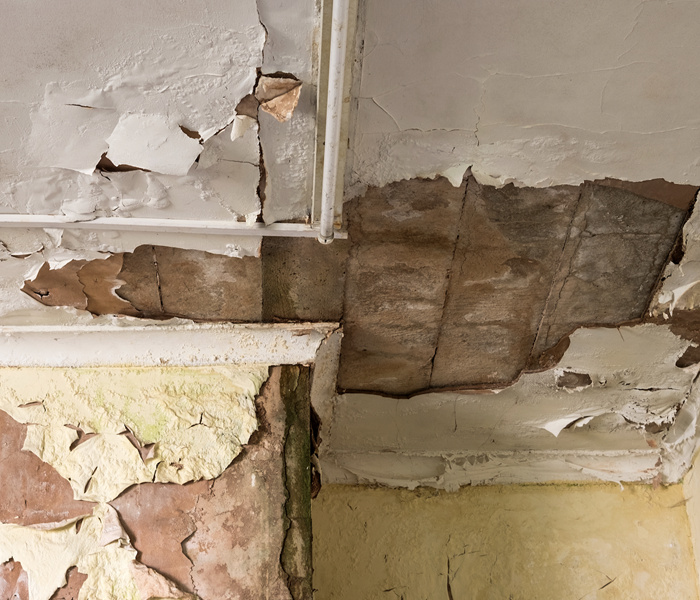 When humidity is high, water damage may be present. Call the professionals for quick response to safeguard your home or business.
When humidity is high, water damage may be present. Call the professionals for quick response to safeguard your home or business.
Texas, with its warm and humid climate, is no stranger to the challenges of water damage and mold growth. Understanding the connection between humidity and these issues is crucial for homeowners. In this blog, we'll explore how humidity levels can affect water damage and contribute to mold growth in Baytown, as well as strategies to mitigate these problems effectively.
The Role of Humidity in Water Damage
Baytown's high humidity levels can exacerbate water damage issues. Moisture from the air can prolong the drying process, making it harder to completely remove moisture from affected areas. This can lead to structural damage and the onset of mold growth.
Immediate Water Removal
In a humid environment, it's essential to act swiftly when water damage occurs. Promptly removing standing water and drying affected areas can prevent prolonged exposure to high humidity, reducing the risk of further damage.
Dehumidification
Utilizing dehumidifiers is an effective way to control indoor humidity levels. They can help maintain optimal moisture levels, making it less conducive for mold to thrive in your home.
Proper Ventilation
Good ventilation is key to managing humidity. Ensure that your home is adequately ventilated to allow moisture to escape. Use exhaust fans in areas prone to moisture, such as bathrooms and kitchens.
Sealing Leaks
Address any leaks in your home promptly. Leaks not only introduce moisture but also increase humidity levels. Fixing leaks can help maintain a drier indoor environment.
Regular Maintenance
Regularly maintaining your HVAC system can prevent moisture buildup. Clean or replace filters as needed to ensure efficient moisture control.
Monitoring Humidity Levels
Invest in a hygrometer to monitor indoor humidity levels. Keep them between 30% and 50% to create an environment less conducive to mold growth.
Mold Prevention
To prevent mold growth, address water damage immediately and thoroughly. Mold can begin to develop within 24-48 hours after water damage occurs.
Professional Mold Remediation
If you suspect mold growth or encounter a mold problem in Baytown, seek professional mold remediation services like SERVPRO®. They have the expertise and equipment to safely remove mold and prevent its return.
In Baytown, TX, where humidity is a constant factor, understanding the impact of humidity on water damage and mold growth is essential for homeowners. By taking proactive measures to control indoor humidity levels, promptly addressing water damage, and seeking professional help when needed, you can protect your home from the devastating effects of mold and ensure a healthier living environment for you and your family. For expert assistance with water damage restoration and mold remediation in Baytown, contact SERVPRO® today. We're here to help you safeguard your home.
Effective Emergency Storm Response Planning in Houston
9/26/2023 (Permalink)
Houston, TX, a city prone to severe weather events like hurricanes and heavy rainfall, requires homeowners and property owners to be well-prepared for emergencies. Developing a comprehensive emergency response plan is crucial for safeguarding lives, and properties, and ensuring a swift recovery. In this blog, we'll explore the importance of emergency response planning for storms in Houston and provide actionable steps to help you create an effective plan tailored to the region's unique challenges.
Understanding Houston's Storm Challenges
Houston faces a range of storm-related challenges, including hurricanes, tropical storms, heavy rainfall, and flooding. The city's flat terrain and complex drainage systems can exacerbate flooding, making proactive emergency response planning a necessity for residents.
Develop a Family or Business Emergency Plan
Whether you're a homeowner or a property owner, creating an emergency plan is essential. This plan should include communication strategies, evacuation routes, meeting points, and a list of emergency contacts. Assign specific responsibilities to family members or employees to ensure a coordinated response.
Stay Informed
Regularly monitor weather forecasts and alerts through local news, weather apps, and official sources like the National Weather Service. Understanding the timing and severity of incoming storms enables you to take timely action.
Designate Safe Areas
Identify safe areas within your property or building where you can seek shelter during a storm. These areas should be away from windows and doors, preferably in an interior room or hallway.
Protect Important Documents
Secure vital documents like insurance policies, identification, and property records in waterproof containers. In the event of property damage, having access to essential documents facilitates the recovery process.
Stock Up on Emergency Supplies
Prepare an emergency kit containing essential supplies such as non-perishable food, water, medications, first-aid items, flashlights, batteries, and personal hygiene products. Ensure the kit is easily accessible and periodically update its contents.
Secure Outdoor Items
Outdoor furniture, equipment, and decorations can become projectiles during storms. Anchor or store these items indoors to prevent them from causing damage or injury.
Implement Flood Preparedness Measures
Houston's vulnerability to flooding underscores the importance of flood preparedness. Elevate utilities, install flood barriers, and consider flood insurance to protect your property from water damage.
Communicate and Practice
Regularly review your emergency plan with family members, employees, or tenants. Conduct drills to practice evacuation procedures and ensure everyone is familiar with the plan's protocols.
Crafting a comprehensive emergency response plan tailored to the storm challenges in Houston, TX, is a critical step in safeguarding your loved ones and property. From developing a family or business emergency plan to staying informed, designating safe areas, protecting important documents, and stocking emergency supplies, these measures will help you navigate storm-related emergencies effectively. By taking proactive steps and staying prepared, you can mitigate risks, reduce potential damage, and ensure the safety of your home, family, and property during storms.
Water Damage Tips: Essential Steps to Minimize the Impact of Water Intrusion
8/10/2023 (Permalink)
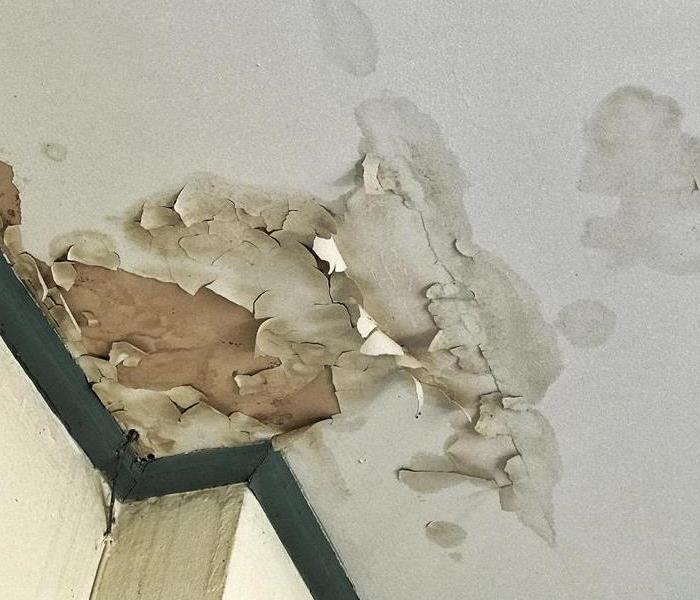 Water damage can be a challenging and stressful experience.
Water damage can be a challenging and stressful experience.
Water damage can strike unexpectedly and wreak havoc on your property, leading to costly repairs and damages. Whether caused by a burst pipe, flooding, or a leaky roof, taking immediate action is crucial to minimize the impact of water intrusion. In this blog, we will provide you with essential tips to help you handle water damage effectively and mitigate further harm to your home or business. By following these steps, you can navigate through this challenging situation with confidence and protect your property.
Prioritize Safety
Before entering a water-damaged area, ensure that it is safe to do so. Turn off the electricity to affected areas, especially if water levels are high or if electrical outlets or appliances are submerged. If necessary, seek professional assistance to safely assess and mitigate potential hazards.
Stop the Water Source
If the water damage is caused by a plumbing issue, such as a burst pipe or overflowing appliance, locate and shut off the main water supply to stop the flow of water. This immediate action will help prevent further damage and flooding.
Document the Damage
Take photos or videos of the water damage and affected areas as evidence for insurance claims. This documentation will assist in the assessment and compensation process. Make a detailed list of damaged items and their approximate value.
Remove Excess Water
Using mops, towels, or a wet/dry vacuum, remove as much standing water as possible. Promptly drying the affected area will help prevent the growth of mold and further structural damage. Open windows and use fans or dehumidifiers to enhance air circulation and aid in the drying process.
Salvage Valuables
If items are salvageable and not excessively damaged, remove them from the affected area and place them in a dry and well-ventilated space. Take immediate action to dry out important documents, electronics, and sentimental items.
Assess and Mitigate Mold Growth
Mold can start growing within 24-48 hours after water intrusion. Inspect the affected area for signs of mold growth and address it promptly. Remove any wet materials, such as carpets, furniture, or drywall, that cannot be adequately dried or cleaned. Consult with professionals if extensive mold remediation is required.
Contact Your Insurance Provider
Notify your insurance provider about the water damage as soon as possible. Familiarize yourself with your insurance policy coverage and follow their instructions regarding documentation, assessments, and repairs. Keep all receipts related to mitigation and restoration efforts.
Prevent Future Water Damage
Take preventative measures to reduce the risk of future water damage. Regularly inspect and maintain your plumbing system, roof, and gutters. Install water leak detection devices and consider adding flood-resistant barriers or sump pumps in flood-prone areas.
Consult with Restoration Specialists
If the water damage is extensive or if you are unsure of the best course of action, consult with water damage restoration specialists. They can provide expert guidance, comprehensive assessments, and professional services to restore your property to its pre-damaged condition.
Water damage can be a challenging and stressful experience, but by following these essential tips, you can minimize the impact and protect your property. Acting swiftly and effectively in response to water damage can make a significant difference in mitigating further harm and restoring your property to its previous state.
Fire Prevention Tips: Protecting Your Home and Loved Ones
8/3/2023 (Permalink)
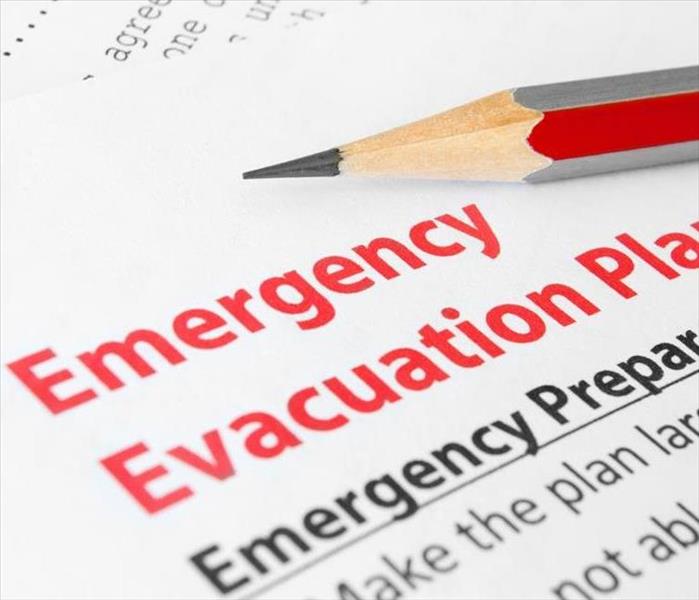 Having a fire prevention emergency plan in place to reduce the risk and protecting your home.
Having a fire prevention emergency plan in place to reduce the risk and protecting your home.
Fires can wreak havoc on our homes, causing damage and posing a serious threat to the safety of our loved ones. Fortunately, there are steps you can take to minimize the risk of fire and protect your home. In this blog post, we will provide you with essential fire prevention tips that can help you safeguard your living space and keep your family safe.
Install Smoke Detectors
Smoke detectors are crucial in alerting you to the presence of smoke and fire in your home. Install smoke detectors on each level of your house, including inside bedrooms and outside sleeping areas. Test them regularly and replace batteries as needed.
Develop a fire escape plan and practice it regularly with your family. Identify two ways to escape from each room and establish a meeting point outside. Make sure everyone in your household knows how to properly use windows, doors, and escape ladders if necessary.
Keep Fire Extinguishers Handy
Place fire extinguishers in key areas of your home, such as the kitchen, garage, and near fireplaces. Familiarize yourself with how to use them properly and ensure they are regularly inspected and maintained.
The kitchen is a common area where fires start. Practice safe cooking habits by never leaving cooking food unattended, and keep flammable items such as oven mitts, towels, and paper products away from the stove. Clean your oven and stove top regularly to prevent grease buildup.
Be Cautious with Candle
Candles can create a cozy atmosphere, but they can also be a fire hazard if not used carefully. Keep candles away from flammable materials and place them in sturdy holders on heat-resistant surfaces. Never leave candles unattended, and extinguish them before leaving the room or going to bed.
Store Flammable Materials Responsibly. Properly store flammable materials such as gasoline, cleaning supplies, and paints in well-ventilated areas away from heat sources. Follow the manufacturer's instructions for storage and disposal to prevent accidents.
Maintain Electrical Safety
Electrical malfunctions are a leading cause of house fires. Ensure that your home's electrical system is up to code and have any wiring issues addressed by a professional electrician. Avoid overloading outlets and extension cords, and never run cords under rugs or furniture.
If you smoke, make sure to extinguish cigarettes completely in designated ashtrays. Avoid smoking in bed or when drowsy, as a lit cigarette can easily start a fire if dropped or left unattended.
Use Space Heaters Safely
When using space heaters, keep them at least three feet away from any flammable materials, including curtains, furniture, and bedding. Never leave them unattended and ensure they are turned off before leaving the room or going to bed.
Regularly Maintain Heating Systems. Have your furnace, chimney, and HVAC system inspected and maintained by professionals regularly to ensure they are functioning properly and free from any potential fire hazards.
Educate Your Family
Teach your family about fire safety and the importance of following prevention measures. Show children how to safely use matches, lighters, and appliances, and stress the importance of reporting any fire hazards or concerns to an adult.
Incorporating these fire prevention tips into your daily routine can significantly reduce the risk of fire in your home. Stay vigilant, be proactive, and prioritize the safety of your loved ones. Remember, fire prevention is a collective effort and the responsibility rests on everyone's shoulders. By working together, we can protect our homes and prevent the devastating consequences of fire.
How do I keep mold from growing in my bathroom?
5/11/2023 (Permalink)
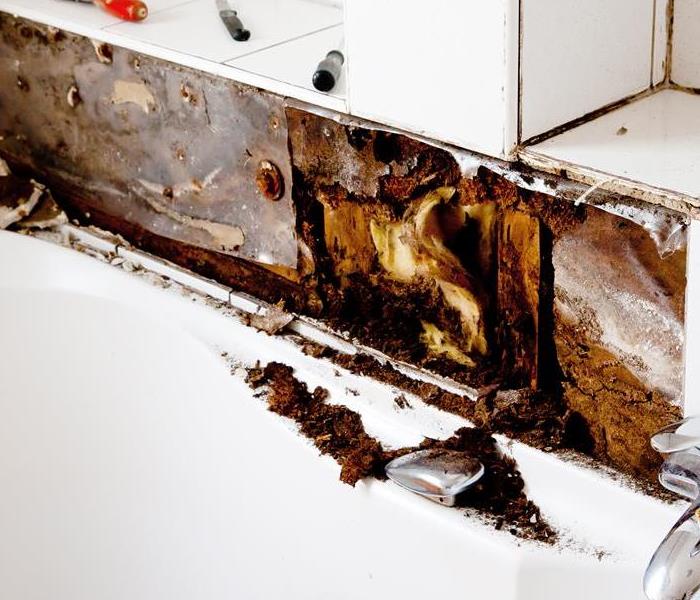 When your bathroom suffers mold damage, act fast!
When your bathroom suffers mold damage, act fast!
Mold is a common problem in bathrooms due to the high humidity and moisture levels. It can be unsightly and leave damage to your home or business. It's important to take steps to prevent its growth. Signs of mold in your bathroom can include a musty odor, discoloration on walls or ceilings, or black spots in the grout or caulking. To prevent mold growth in your bathroom, it's important to ensure proper ventilation, fix any leaks or water damage promptly, and clean and dry surfaces regularly. In this blog, we'll explore some effective ways to keep mold from growing in your bathroom.
Proper Ventilation
One of the best ways to prevent mold growth in your bathroom is to ensure proper ventilation. Make sure your bathroom has a ventilation fan that is powerful enough to remove moisture from the air. Turn on the fan during and after showers or baths, and leave it on for at least 30 minutes to ensure proper ventilation.
Regular Cleaning
Regular cleaning is essential to preventing mold growth in your bathroom. Wipe down surfaces such as the shower, tub, sink, and toilet with a disinfectant cleaner. Make sure to clean any areas where moisture may accumulate, such as the corners of the shower or the bottom of the toilet tank.
Repair Leaks
Leaking pipes or fixtures can create excess moisture in your bathroom, which can lead to mold growth. Check for leaks regularly and repair any leaks as soon as possible. If you're not sure whether you have a leak, you can check your water meter. If the meter is still running when all water is turned off in your home, you likely have a leak.
Use a Dehumidifier
Using a dehumidifier in your bathroom can help to reduce moisture levels and prevent mold growth. Make sure to empty the dehumidifier regularly and clean it according to the manufacturer's instructions.
Monitor Humidity Levels
Keeping an eye on the humidity levels in your bathroom can help to prevent mold growth. You can purchase a hygrometer to monitor humidity levels. Keep the humidity level below 60 percent to prevent mold growth.
In conclusion, preventing mold growth in your bathroom requires a combination of proper ventilation, regular cleaning, and monitoring humidity levels. Repairing leaks and using a dehumidifier can also be helpful in preventing mold growth. By following these tips, you can keep your bathroom mold-free and ensure a healthy environment for you and your family.
SERVPRO has professional cleaning equipment and techniques used to ensure proper cleaning and mold remediation after a water loss leaving behind mold damage.
Light Up Your Life Safely: A Guide to Using Candles in Your Home Without Any Hazards
4/12/2023 (Permalink)
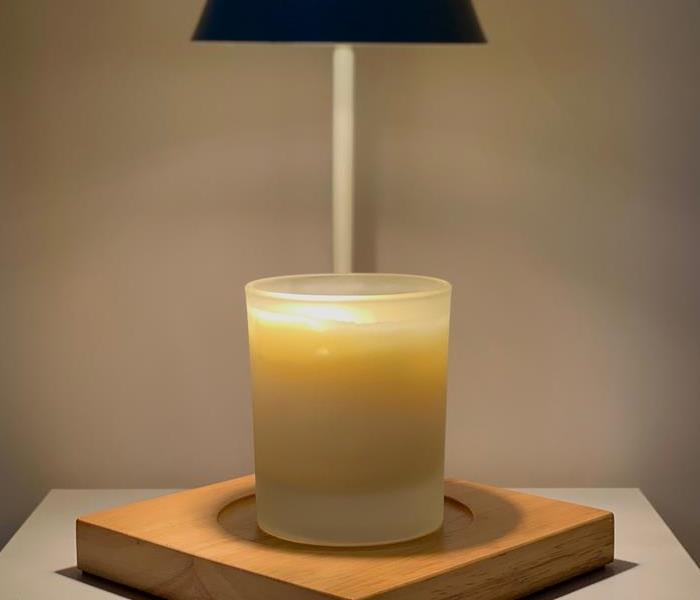 Candles can be a great addition to your home, but use them safely
Candles can be a great addition to your home, but use them safely
Candles are a great way to add ambiance and warmth to your home, but they can also be a fire hazard if not used safely. In this blog post, we'll go over some tips for safely using candles in your home.
Keep Candles Away from Flammable Objects
The first and most important tip for using candles safely is to keep them away from flammable objects. This includes curtains, bedding, furniture, and anything else that could catch fire. Make sure that your candles are placed on a flat, stable surface and that they are not near anything that could easily ignite.
Never leave a burning candle unattended. This means that you should always extinguish candles before leaving the room or going to bed. It's also a good idea to keep candles out of reach of children and pets, as they can easily knock them over and start a fire.
Always use a candle holder that is designed specifically for candles. This will help to prevent the candle from tipping over and starting a fire. Make sure that the candle holder is made of a non-flammable material, such as glass or ceramic.
Trim the Wick
Before lighting a candle, make sure that the wick is trimmed to a quarter of an inch. This will help to prevent the flame from getting too large and causing the candle to overheat. If the flame starts to flicker or smoke, extinguish the candle and trim the wick before relighting it.
Avoid Drafts
Candles should be kept away from drafts, as they can cause the flame to flicker and become larger. This can also cause the candle to overheat and become a fire hazard. Keep candles away from windows, doors, and air conditioning vents.
Extinguish Candles Properly
When it's time to extinguish a candle, make sure that you do it properly. Use a snuffer or a spoon to put out the flame, rather than blowing it out. Blowing out a candle can cause the flame to spread and the wax to splatter, which can be dangerous.
Don't Burn Candles All the Way Down
Finally, it's important to never burn a candle all the way down. When a candle gets too low, the heat from the flame can cause the glass or ceramic holder to crack or shatter. Always extinguish a candle when there is about a quarter of an inch of wax left in the holder.
In conclusion, candles can be a great addition to your home, but it's important to use them safely. By keeping candles away from flammable objects, using candle holders, trimming the wick, avoiding drafts, extinguishing candles properly, and not burning candles all the way down, you can enjoy the warmth and ambiance of candles without putting your home at risk.
What Is Secondary Water Damage?
3/15/2023 (Permalink)
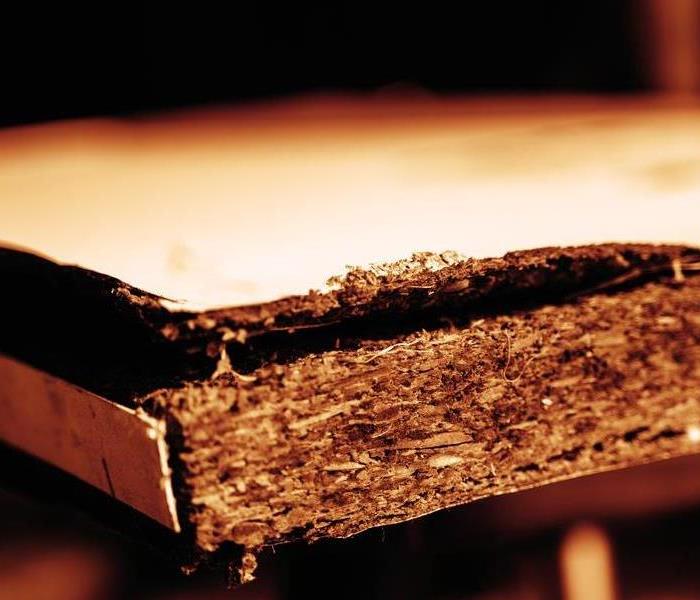 Secondary damages to water can leave your home in a mess.
Secondary damages to water can leave your home in a mess.
Secondary water damage is very common. It can also be very costly. With secondary water damage, the initial flooding or leak has already occurred and the moisture has been present for an extended period of time. Secondary water damage occurs when there is a large amount of moisture left behind after the initial problem is taken care of.
What is Secondary Water Damage?
Secondary water damage is a form of structural decay that occurs when you don't immediately deal with the source of your primary water damage. It can be caused by any number of things, but it's most often the result of prolonged exposure to moisture.
Secondary water damage is preventable--it doesn't have to happen!
Mold Infestation
Mold grows everywhere, and it will grow on any surface. Mold spores are present in the air all around us, and when they come into contact with a damp or wet surface--like wood, drywall, or carpeting--they begin to grow. In as little as 48 hours after water damage occurs, mold can begin to appear on your walls and floors if you don't take action immediately!
If you have prolonged exposure to water damage from flooding or leaks from pipes bursting, then you may experience secondary damage in the form of a mold infestation.
Flooring Damage
Another common form of secondary water damage is flooring damage. This occurs when the flooring has been exposed to water for an extended period of time, which can cause it to buckle or warp. If you have a home with hardwood floors and you notice that they are buckling, warping, or cracking in any way, this could be a sign that there was some sort of leak somewhere in the home. It's important that you get any potential issues checked out as soon as possible so that they don't get worse over time--and potentially affect other areas of your house later on down the line!
Electrical Damage
Electrical damage is one of the most dangerous forms of secondary water damage. Electrical outlets, switches, and lights can be damaged by water that gets into them. This can cause fires or electrocution, which can lead to property damage and personal injury.
If you are dealing with electrical issues after a flood or other type of water damage has occurred in your home or business, it's important to contact an electrician right away so they can assess the situation and take the necessary steps toward fixing it.
Pipe Damage
Secondary water damage can occur to the pipes in your home as well. Prolonged water exposure can lead to extensive corrosion. When a pipe is corroded, it can cause leaks and eventually lead to further water damage.
Wood Rot
Wood rot is a type of secondary water damage that occurs when moisture from the ground or another source seeps into your home's foundation, walls, and floorboards. You may not know it at first, but over time this will cause wood to decay and break down. If left untreated it could lead to further structural damage in your home.
It's important to know the signs of secondary water damage. If you notice any of these signs in your home or business, contact a professional immediately. They will be able to help you identify the cause and get it repaired quickly so it doesn't cause further damage.
 When nature strikes, it often leaves behind a trail of destruction that requires immediate attention.
When nature strikes, it often leaves behind a trail of destruction that requires immediate attention.





 24/7 Emergency Service
24/7 Emergency Service






